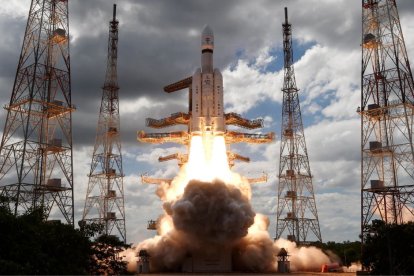Indian space agency unveils the first image from its camera at the moon's south pole
The Chandrayaan-3 mission landed successfully on Aug. 23. During its exploration, the Pragyan rover has discovered the presence of lunar sulfur.

(ISRO)
India can officially say that it is among the countries that have landed on the moon. The Chandrayaan-3 mission landed successfully on Aug. 23 at the south pole of the satellite, but it took a whole week for the Indian space agency (ISRO) to reveal the first image taken by the Pragyan rover:
The image is just one of the discoveries that the country has made during these seven days of mission. The Pragyan rover arrived aboard the Vikram lander and quickly began exploring the vicinity with the help of a navigation camera installed on board.
Presence of sulfur detected on the moon
Shortly after beginning its exploration, the first investigations carried out by Pragyan confirmed "unambiguously the presence of sulfur (S) in the region." The discovery was made, details RTVE, thanks to the LIBS measuring instrument, a tool that analyzes the composition of materials by exposing them to intense laser pulses, "something that was not feasible with the instruments on board the orbiters."
That same tool also served to demonstrate the presence of not only sulfur, but aluminum (Al), calcium (Ca), iron (Fe), chromium (CR) and titanium (Ti) at the moon's south pole. In addition, the statement says, they also found traces of manganese (Mn), silicon (Si) and oxygen (O). It remains to be known if there is the presence of hydrogen on the moon, which is Pragyan's current mission. These results have not yet been announced.
RECOMMENDATION





















